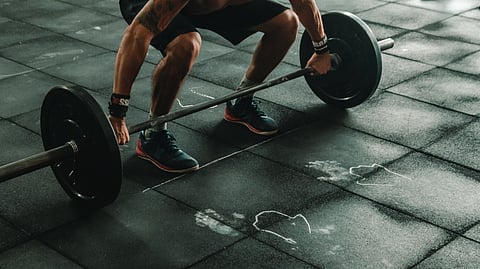

Mr. Manish Rajubhai Prajapati was a twenty-year-old volleyball player who lived in the Mehsana district of Gujarat. He was a student at Nagalpur College and had won many matches for the college team.
On Tuesday morning, he had come to college from his residence to practice volleyball for upcoming tournaments. He then informed his teacher about the chest discomfort and pain that he felt, and shortly after that, he collapsed. The athlete was then rushed to the Lions Hospital in Mehsana, but he had passed away during the transit.
The coach of the team then commented that Manish was a star player for the team and that he had secured many gold medals for the team. He was one of the main assets for the team for the upcoming matches scheduled in the next few days, he added.
This loss was the latest addition to the series of deaths of young people during the Dussehra celebrations.
The death of Manish, who was a fine athlete, has raised concerns. This kind of death is reported and well-analyzed in the medical literature, where it is termed a sudden cardiac death (1).
According to a recent publication reviewing the facts associated with such incidents of SCDs (sudden cardiac death) in athletes, they discerned that SCDs are more common in males, in adults over 35 years of age, and in younger athletes with underlying cardiac structural or arrhythmogenic (related to electrical conduction) syndromes (2). The athletes will be subjected to a lot of physical stress, like dehydration, electrolyte imbalance, accelerated breathing, acid/base imbalance following strenuous exercise, adrenergic surge during games, and so on. These inputs will be tolerated by a healthy athlete but will have detrimental effects on someone with an unknown underlying cardiac condition. The structural and electrical pathology in a genetically predisposed individual will result in the precipitation of a fatal cardiac event resulting in death.
This, however, can be prevented by screening and evaluating the athletes for the presence of any of these underlying conditions, like coronary artery disease, congenital cardiac channelopathies, myopathies, anomalous coronary artery disease, etc., before they participate in the sport. Also, if there was a family history of SCDs, then those athletes should also be screened for any cardiac anomalies that could endanger them since most cardiac anomalies are inherited. Furthermore, smoking, vaping, substance abuse, and environmental stresses can also lead to such events.
The most common presenting symptoms are shortness of breath, chest tightness and pain, performance decline, palpitations, dizziness, and sweating. Immediate administration of basic life support procedures like CPR and increasing the availability of defibrillators in remote areas can reduce the loss of young lives (2).
(Input from various media sources)
References:
1. Wasfy MM, Hutter AM, Weiner RB. Sudden Cardiac Death in Athletes. Methodist Debakey Cardiovasc J [Internet]. 2016 Apr 1 [cited 2023 Nov 22];12(2):76
Available from: /pmc/articles/PMC4969030/
2. Han J, Lalario A, Merro E, Sinagra G, Sharma S, Papadakis M, et al. Sudden Cardiac Death in Athletes: Facts and Fallacies J Cardiovasc Dev Dis [Internet]. 2023 Feb 1 [cited 2023 Nov 22]; 10(2)
Available from: /pmc/articles/PMC9965876/
(Rehash/Bharkhavy K V)
